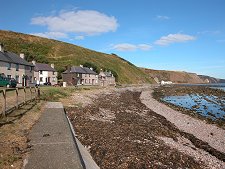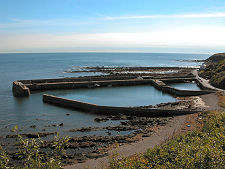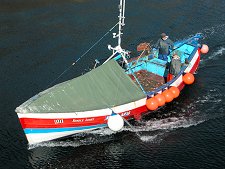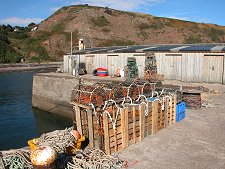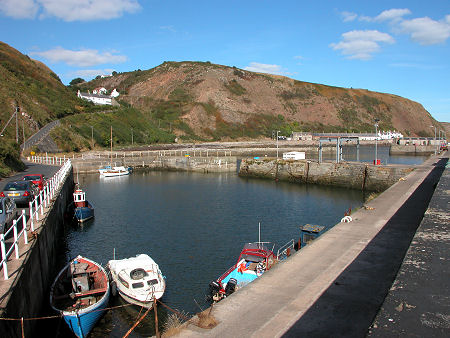 Burnmouth Harbour from the South |
Burnmouth is one of the best known yet least recognised of of Scottish villages. Travel north from the Scottish border along the A1 and Burnmouth is the first settlement you encounter. But most of the village is out of sight of the main road and little visited by those passing along it.
Burnmouth lies at the point where a burn slices through the 300ft high cliffs lining this coast en route to the sea. There may have been a mill here in the middle ages, but little else until a fishing harbour was built in the 1830s, later extended in 1879 and 1959. The East Coast Main Line railway passes along the top of the cliff here and Burnmouth had a railway station from 1846 to 1962.
For such a small settlement, Burnmouth is highly fragmented, occupying a cluster of niches above, below, and on the cliffs surrounding the harbour. The well known part of Burnmouth includes the white painted inn, The First and Last (which used to be called the Gulls Nest Bar), facing onto the A1. Behind it and closer to the railway, is a group of houses.
But the remainder of the village lies down the steep cliffside road. One group of buildings cluster around the church at an elbow in the road half way down the cliff. Three other groups of buildings occupy the shelf at the foot of the cliffs. The most northerly is known as Partanhall. This is a single line of cottages separated from the high water mark only by the width of the track leading round to Burnmouth Harbour.
The harbour lies on the north facing side of the inlet and comes complete with a three storey terrace of houses built in the 1950s. They include an unusual feature: fishermen's stores built into the ground floor. The harbour comprises an outer and an inner basin, with only the outer harbour (marginally) accessible at low tide. If you catch Burnmouth at low tide you don't see it at its prettiest, but you do get to see the remarkable parallel lines of serrated rocks that suggest the rest of this bay is not an ideal place for a boat.
The final part of the village, Cowdrait, lies a few hundred yards south of the harbour, accessible via a road squeezed between the shore and the foot of the cliffs and, as a result, prone to erosion. Here, as in other parts of Burnmouth, you get the sense of a community clinging by its fingertips to the cliff, and being here in an easterly gale must be an awe inspiring experience.
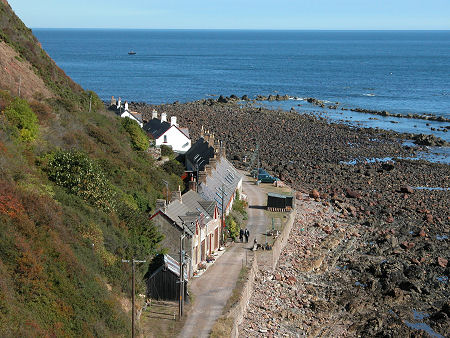 Partanhall |
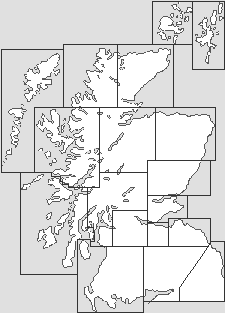
|
|
|
Visitor InformationView Location on MapWhat3Words Location: ///saves.convinces.stay |
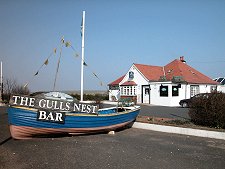 The "First and Last" in its days as the Gulls Nest Bar |
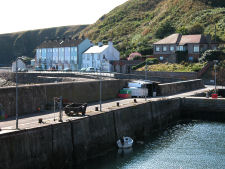 Burnmouth from the Harbour |
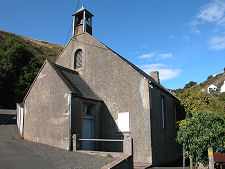 Church |
